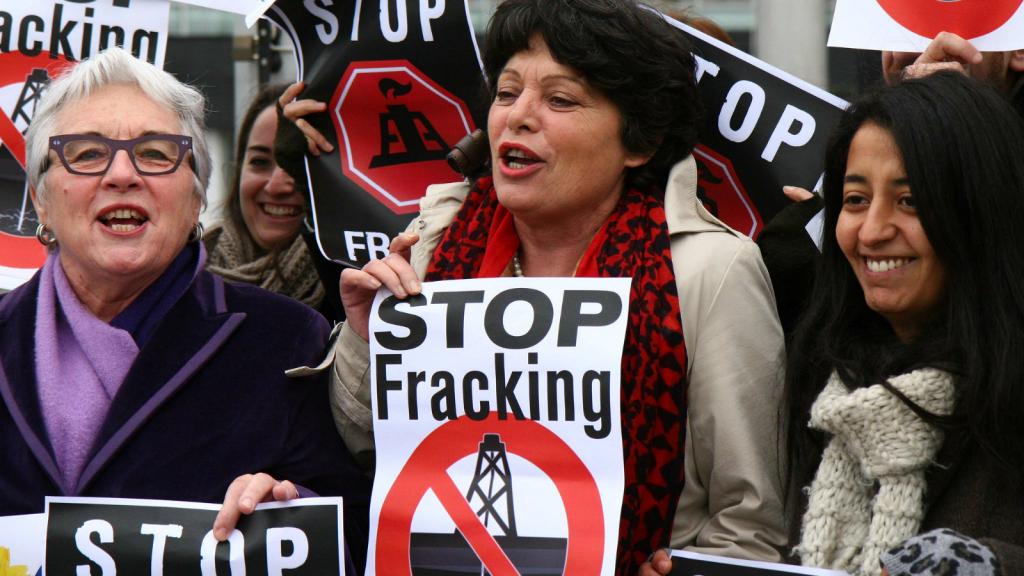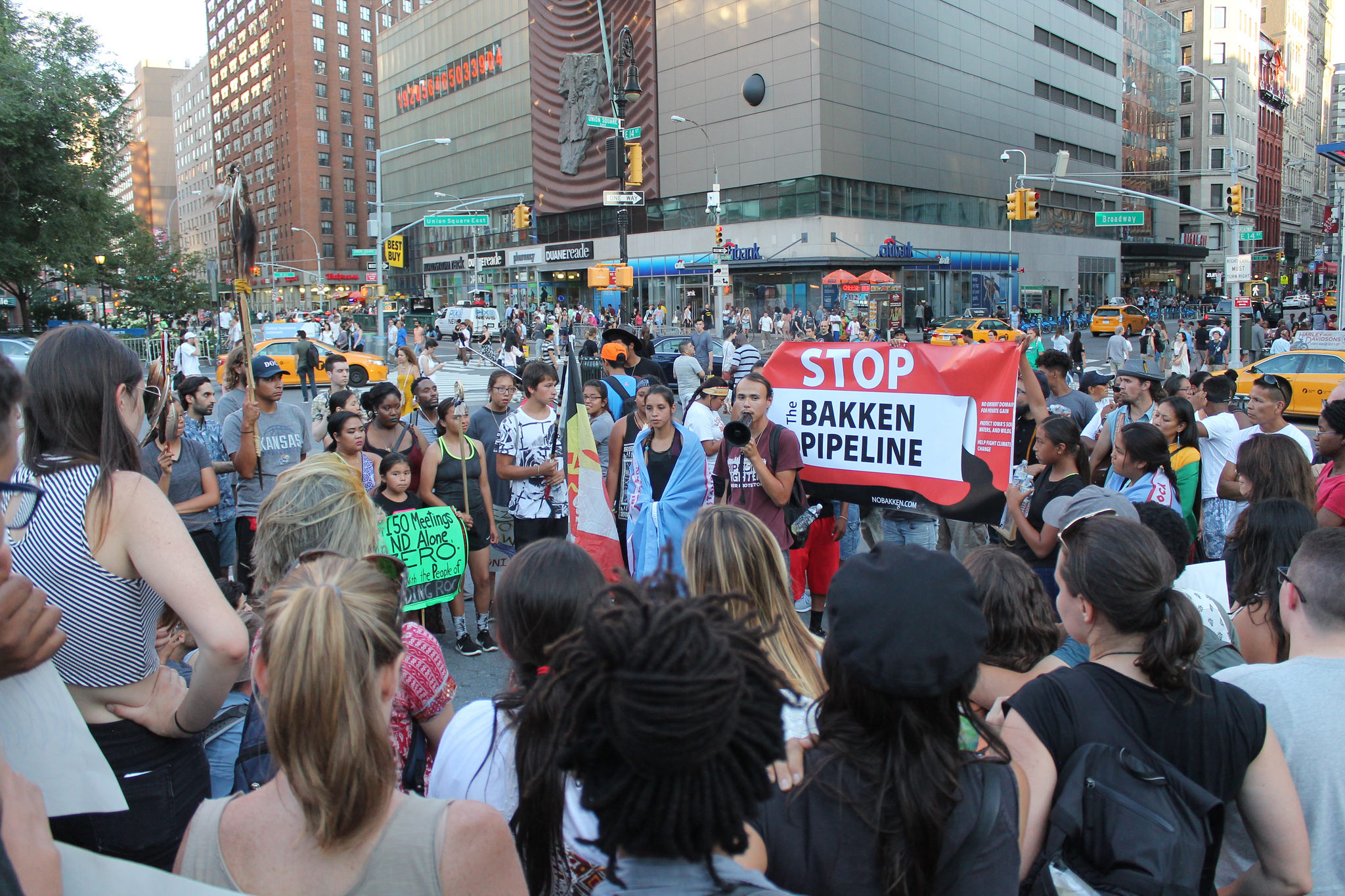Update: Judge James E. Boasberg of the United States District Court for the District of Columbia announced on Wednesday afternoon that he would postpone his decision on the Dakota Access Pipeline until September 9, to allow time for further consideration.
By the end of the year, there will be a new 1,172-mile oil pipeline snaking its way across the Midwest. That is, unless a Native American tribe wins its case that the Army Corps of Engineers failed its due diligence to consider violations to laws like the Clean Water Act and the National Historic Preservation Act.
On Wednesday, August 24, it will be up to a federal court in Washington, D.C. to effectively determine the pipeline’s fate.
Whether you’ve been following closely or this is your first time hearing about one of the biggest battles since Keystone XL, here’s what you need to know:
What is the fuss in court over?
The Dakota Access pipeline (DAPL) would carry 570,000 barrels of oil per day from the Bakken region of northwest North Dakota to a refinery in Illinois. There, the oil would be refined and sent to markets along the East Coast and down to the Gulf of Mexico.
The Army Corps of Engineers gave DAPL permission to build in late July, despite pending lawsuits and active local resistance. One of those lawsuits, filed in federal court by the Standing Rock Sioux tribes against the Army Corps of Engineers, is the one being heard in federal court in Washington, D.C. on Wednesday.
The suit claims the pipeline will cause “irreparable” damage to sacred lands at the confluence of the Cannonball and Missouri Rivers. “Industrial development of that site for the crude oil pipeline has a high potential to destroy sites eligible for listing in the National Register,” according to the lawsuit. It further alleges that Dakota Access LLC failed its responsibility to adequately consult with tribes before construction, in violation of the National Historic Preservation Act. The Missouri River (Standing Rock’s only water source) and “water” itself is of vital cultural importance, the suit adds.
If the court rules in the tribe’s favor, stop-work orders will be issued on construction all along the route.
Who is unhappy?
DAPL’s route crosses agricultural land, protected wildlife habitats, and three major rivers: the Missouri, the Mississippi, and the Big Sioux.
This has a lot of different interests on edge and in the trenches.
Faced with eminent domain, property owners in Iowa are fighting their own legal battle. Nine landowners requested an emergency stop to pipeline construction on the grounds that the Iowa Utilities Board, which granted Dakota Access its construction permits, had done so outside of its jurisdiction. (The board’s application of eminent domain, they argued, would only be legal if Dakota Access were a public utility.)
That legal battle isn’t going so well: On Monday, a district court denied the emergency stop, reports the Des Moines Register.
The pipeline is also bad news for the Standing Rock Lakota, Dakota, and Nakota Nations, for whom Missouri River is a sole source of water on the prairie and who worry that construction will disrupt certain historical sites.
What are the stakes for the environment?
Pipelines, as we know, spill. One of DAPL’s stakeholders, Enbridge Energy, was responsible for one of the worst, preventable oil spills on land in recent memory: more than 1 million gallons in the Kalamazoo River in Michigan.
For climate change activists like Bill McKibben, stopping DAPL construction is another major battle in their campaign to keep fossil fuels in the ground. DAPL, as Mother Jones notes, is just seven miles shorter than the defeated Keystone XL pipeline.
What are protesters doing about it?
An hour south of Bismarck, protesters have gathered since April near Cannon Ball, N.D., where Dakota Access plans to lay pipe under the Missouri River. In recent weeks, the ranks of protests swelled from several dozen to more than 800.
The heavily-policed scene has not been without incident. More than 20 people have been arrested in the last few weeks, and a roadblock guarded by state police established on Highway 1806, which leads to the protest site and the Standing Rock reservation.
Officials pulled state emergency resources like water and trailers from the protest camp on Monday, after the Morton County Sheriff’s Department claimed officers had been threatened with physical violence and pipe bombs (an allegation that protest organizers adamantly denied to Grist and other outlets).
What’s next?
At the protest site, hundreds of protesters plan to continue to occupy the area near Dakota Access’s entry point into the Missouri. Regardless of the outcome of Wednesday’s court date, activists have no plans to back down, organizer Tara Houska told Grist in a phone call last Friday.
“I think it goes without saying that the camp is committed to not have the pipeline put under the river,” she said.
If Standing Rock prevails in D.C. court on Wednesday, construction will halt across the pipeline’s multi-state path, pending more rigorous tribal consultations. The Army Corps of Engineers may also be required to conduct an environmental impact assessment for the pipeline as a whole.
This court battle is one of protesters’ last, best hopes for halting DAPL’s start date. They plan on making a whole lot of noise on Wednesday, and in coming weeks, to make sure they’re heard.



